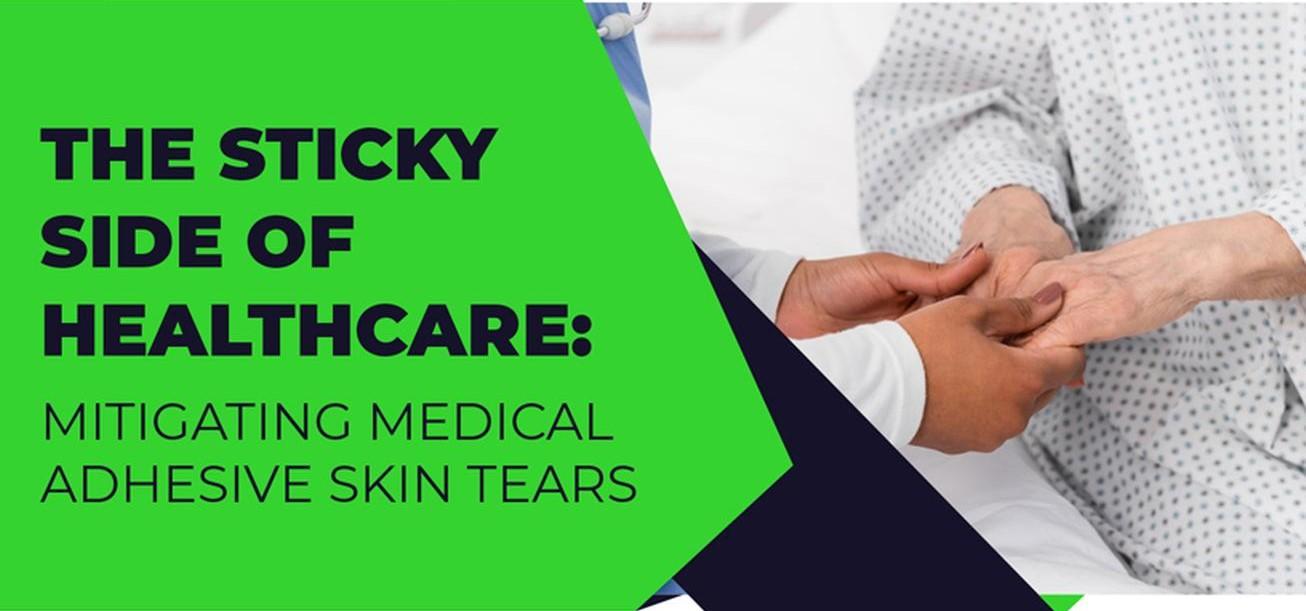
This article explores strategies for preventing mechanical MARSI and emphasizes the global commitment to reducing these preventable injuries, highlighted by the establishment of “A World Without Skin Tears Day” by ISTAP on April 18, 2024.
Mitigating Medical Adhesive Skin Tears
Skin tears, a common yet preventable injury, are particularly prevalent among vulnerable populations such as the elderly or those with delicate skin due to various medical conditions. Mechanical Medical Adhesive-Related Skin Injuries (MARSI)represent a specific category of these injuries that occur due to the application or removal of medical adhesives.
Understanding how to prevent these injuries is paramount in healthcare settings to ensure patient comfort, reduce the risk of infection, and avoid additional medical complications.
Understanding MARSI
Mechanical MARSI can occur when adhesives used in medical tapes, dressings, or devices damage the skin. This type of injury is especially common among patients with fragile skin,
such as neonates, the elderly, or those undergoing long-term steroid therapy. The prevention of MARSI is not only about reducing patient discomfort but also about improving outcomes by
preventing infections and promoting faster wound healing.
Protect Your Skin With Medstock® Silicone Wound Care Products
Provides a gentle silicone contact layer that ensures atraumatic removal.

Key Strategies for Prevention
Assessment and Selection of Adhesives
Proper assessment of a patient’s skin and the careful selection of adhesives can significantly reduce the risk of MARSI. Clinicians should consider factors such as the patient’s age, skin condition, and the intended duration of adhesive application. Silicone-based adhesives, for example, have been shown to cause less skin damage compared to traditional acrylate adhesives, making them a preferable choice for individuals at high risk of skin tears.
Skin Hydration and Protection
Maintaining skin integrity through proper hydration and the use of skin protectants can also play a crucial role in preventing MARSI. Well-hydrated skin is less prone to tearing, and barrier creams can provide an additional layer of protection from adhesive trauma. The selection of appropriate moisturisers and protectants should be tailored to the patient’s skin type and condition.
Education and Training
Healthcare professionals should be educated and trained in the correct application and removal techniques of medical adhesives. This includes understanding how to apply tension evenly and how to gently remove adhesives in a manner that minimises skin stress. Ongoing education programs can help ensure that staff are up-to-date with best practices and new products that may offer safer alternatives for skin protection.
Regular Skin Assessments
Regular and thorough skin assessments are vital in the early identification of potential MARSI risks. These assessments should be conducted before the application of any adhesive product and periodically thereafter, especially for patients with known risk factors. Early detection of skin irritation or damage allows for timely intervention, such as changing the adhesive product or applying protective measures to prevent further injury.
Improving patient care
Preventing mechanical MARSI is an essential component of patient care, requiring a multifaceted approach that includes the careful selection of adhesives, staff education, skin protection, and regular assessments
The establishment of “A World Without Skin Tears Day” by ISTAP further emphasizes the global commitment to this cause, encouraging a unified approach to awareness, prevention, and treatment.
Together, these efforts pave the way for improved patient care and a significant decrease in the prevalence of skin tears in vulnerable populations.
Please contact Surgical House if you would like to know more about Medstock Wound Care applications or book wound care training for your team.

Content for this article was supplied by Medstock Wound Care Australia
References:
- Banks, D., LeBlanc, K., & Baranoski, S. (2020). Skin tears: Best practices for care and prevention
- Nursing 2020, 50(6), 30–36. - Kemp, M. G., McNichol, L., Rosen, T., & Kerstein, M. D. (2017).
- LeBlanc, K., & Baranoski, S. (2020). Skin Tears: State of the science: Consensus statements for the prevention, prediction, assessment, and treatment of skin tears.
- Advances in Skin & Wound Care, 33(1), 5-17.McNichol, L., Lund, C., Rosen, T., & Gray, M. (2013). Medical adhesives and patient safety: State of the science. Journal of Wound, Ostomy and Continence Nursing, 40(4), 365-380.

